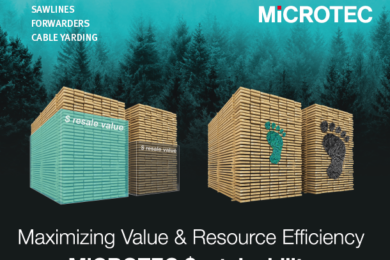Former Federal Environment Minister Malcolm Turnbull said environmental standards at the Gunns’ Tasmanian pulp mill would be the world’s best, but some specialist observers of the cutting-edge Swedish pulp and paper industry doubt his claim, according to a report in Australian newspaper The Age. Two years ago, three Swedish pulp and paper mills found small traces of dioxin in production. Dioxin is the world’s most toxic chemical, potentially deadly to fish and carcinogenic to humans, and produced from bleaching processes that contain chlorine.
All mills that use chlorine dioxide to bleach pulp produce small amounts of dioxin. The issue is what level is safe. Australia’s Chief Scientist has judged the Gunns’ mill to be safe, according to the report. But the Government’s ruling on how much dioxin discharge it will allow before remedial action must be taken raises questions on standards. Turnbull ruled the mill could produce up to two picograms a litre of effluent water before it must take action, and 3.4 picograms a litre before it must be shut down. Tasmanian officials sent the figures for comment to Erik Nystrom, a specialist in pulp and paper production at the Swedish Environmental Protection Agency, who said that the dioxin level that would trigger closure of the mill equalled the amount of dioxin emitted in a year by the whole Swedish bleached pulp and paper industry, which produced about seven times more bleached pulp than Gunns would produce. “I cannot understand how it would be possible to get to that level with modern (pulp) processing. Why they have set their levels at this level I don’t know. Any Swedish mill that saw such levels would be alarmed and act immediately,” he said. Sweden’s standards are a world low, with the industry looking to eliminate all but the smallest amounts. Nystrom does not criticise the use of chlorine dioxide, which the EPA and other regulators see as no more environmentally damaging than chlorine-free production. The world pulp industry vigorously agrees, arguing that pulp made using chlorine dioxide is environmentally sound, cheaper and makes better paper than totally chlorine-free pulp. But Rune Eriksson, a longtime forestry consultant who has worked for Greenpeace and the WWF, read the Chief Scientist’s report on the Gunns’ mill for The Age and concluded the mill’s standards on permitted levels of nitrogen and phosphorous were middle of the range and not world-class. He added there was no safe level of dioxin. Dr Alain Rajotte, a French-Canadian environmental consultant who worked for the OECD and wrote a PhD on Sweden’s pulp industry, shared the concern: “The precautionary principle applies, as persistent toxics should always be prevented if there is an alternative. Why did it not consider a chlorine-free process?”






